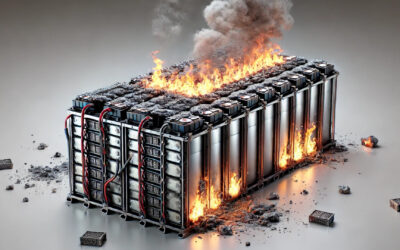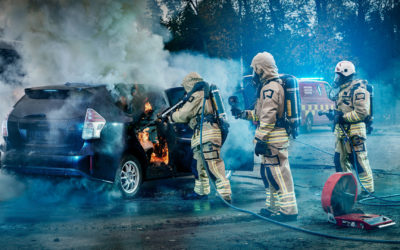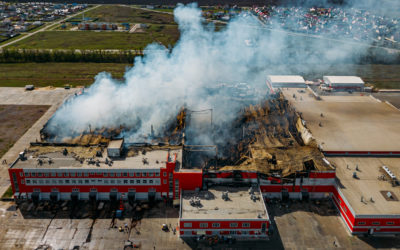Cobra used in wall or floor construction, ducting or crawl spaces.
Fires in building structures, or hidden fires, present many risks to firefighters and are often difficult for the fire and rescue services to deal with due to limited access.
Examples of hidden fires
Fires in roof or crawl spaces, ventilation slits, embers inside of wall structures, etc.
The space exposed to fire is usually small and under-ventilated, the air supply is limited, which means that the fire is so-called ventilation controlled. As a result, in many cases, the fire progresses more slowly than in a normal room fire, which by comparison has a good supply of oxygen. If the structure burns through, or if openings to access the fire are created, air flows in and the fire flares up. This leads to much greater and more extensive fire damage.
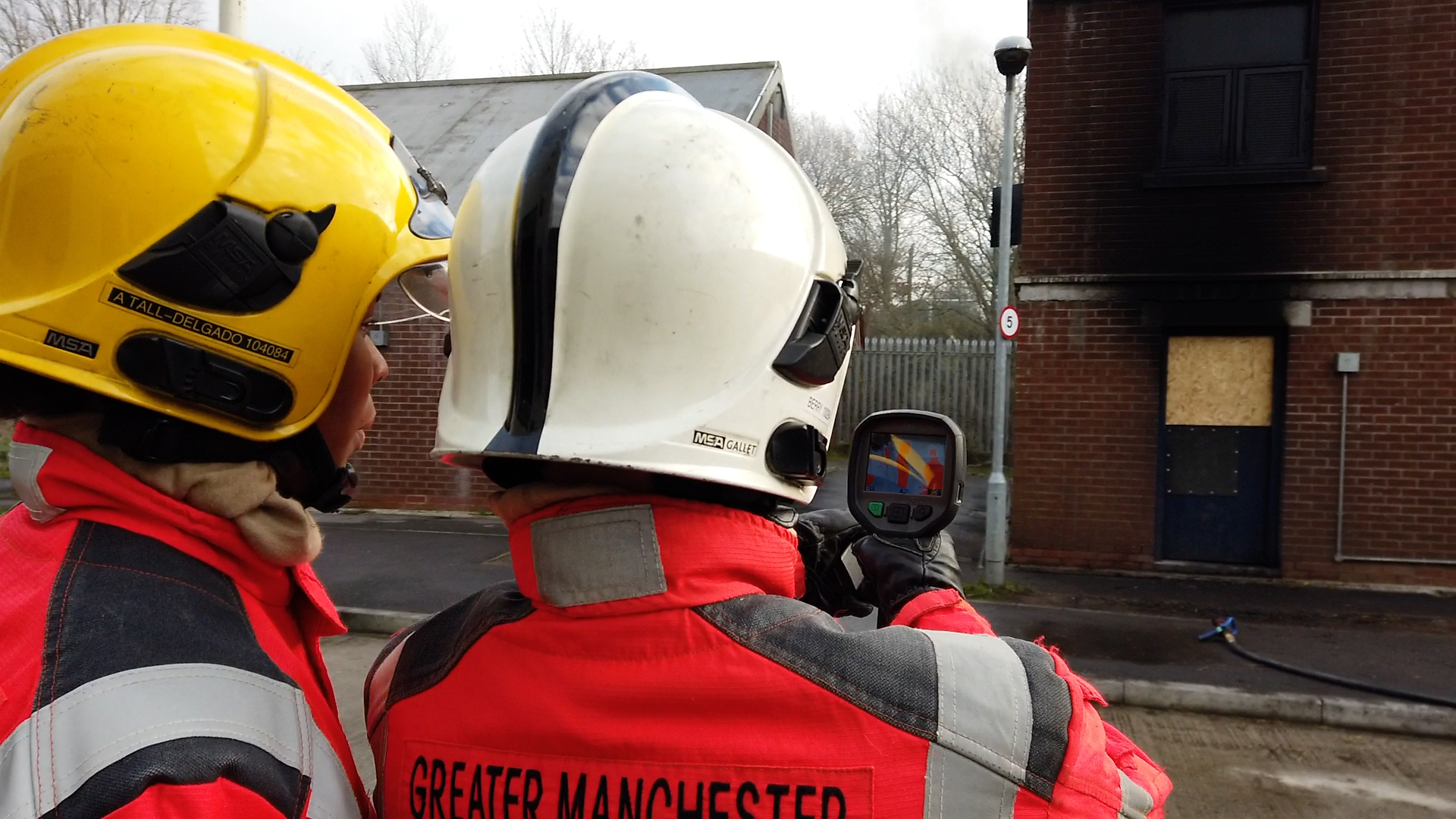
Using Cobra effectively for structural fires
A successful attack on structural fires can be done from the outside using Cobra. The confined space where the fire is burning is kept intact while water is applied to the fire. Cobra pierces through the material using water and abrasive, a cutting agent. Once the material is pierced, the water is distributed in a fine mist. As this is done in one continuous motion, no extra air is added to the fire, resulting in a suppressed or extinguished fire. Firefighting crews can then open the structure to check that the fire is extinguished with less risk of the fire increasing.
Cobra can be used at any angle, which in practice means that structural fires can be reached in the eaves as well as in the floor. With the right technique, smouldering fires in the insulation of a wall structure can also be reached.
There are more advantages to using Cobra for structural fires. In addition to quick and easy access, it is possible to reposition Cobra if results are not achieved the first time. Cobra cutting extinguisher uses only 60 litres of water per minute at 300 bar pressure and a water flow of 200 m/s. This creates a fine water mist – which has a great impact on fire gases, enabling a temperature drop from 700°C to below 100°C in around 30 seconds (depending on the size of the room and fire loading).
In addition, very little (if any?) water damage is caused since nearly all water evaporates.
Communication is vital. The Cobra operator may be unable to see what effect Cobra use is having on the fire, so good communication between the crew, Cobra operator and Incident Commander must be achieved and maintained to get the Cobra lance into the best position. Knowledge of building construction is important so that Cobra can be applied to maximum effect.
With knowledge and training, fire and rescue services can control the fire and reduce the risk of fire spreading.
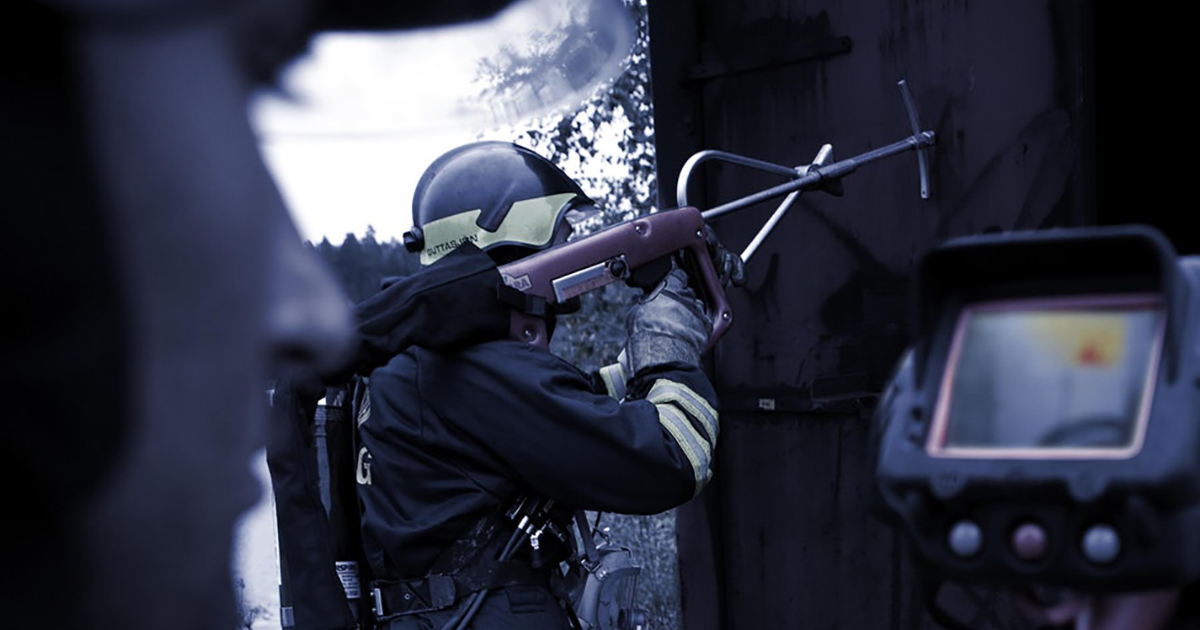
Cobra Benefits
Limits contamination of firefighters by toxic fire gases.
The fire and fire gases are suppressed from the outside of the fire compartment and firefighters only enter to dampen the remaining hot spots after ventilation has occurred. This limits exposure to toxic fire gases in a very confined space.
Quick intervention.
Getting equipment in place to fight a fire in e.g. a duct or inside of a wall structure can use up valuable time. Utilising Cobra from the outside reduces the amount of time taken to get water into the fire compartment. The equipment is light in weight and easy to handle, which enables rapid deployment. The training programme that underpins Cobra gives fire crews the ability and confidence to deploy Cobra very quickly on arrival.
Limits damage from fire and water.
Using traditional firefighting methods when fighting fires in confined spaces uses a considerable amount of water – 450 litres per minute or more – and can result in significant water damage to the rest of the property. Cobra uses 60 litres of water per minute, considerably less than traditional firefighting methods.
Limits water use.
As Cobra only uses 60 litres of water per minute, an 1800 litre water tank will last 30 minutes if Cobra is used continuously. This gives valuable time to secure additional water supply where needed – which is very important in areas where water supplies are scarce.
Reduces environmental impact from the fire.
The rapid fire and fire gas suppression associated with Cobra means that less toxic emissions get into the atmosphere. Reduced water consumption means less contaminated water runoff gets into watercourses.
Benefits of Cobra use
- Limits firefighter contamination from toxic fire gases
- Quick intervention
- Limits damage from fire and water
- Limits water use
- Reduces environmental impact from the fire
Source: Johansson, N. (2015). A case study of fires in structural elements. Lund: Division of Fire Safety Engineering, Lund University.
Source: Palmkvist, K. & Vylund, L. (2017). Extinguishment strategies for tall timber buildings. Borås: RISE Report 2017:65.
